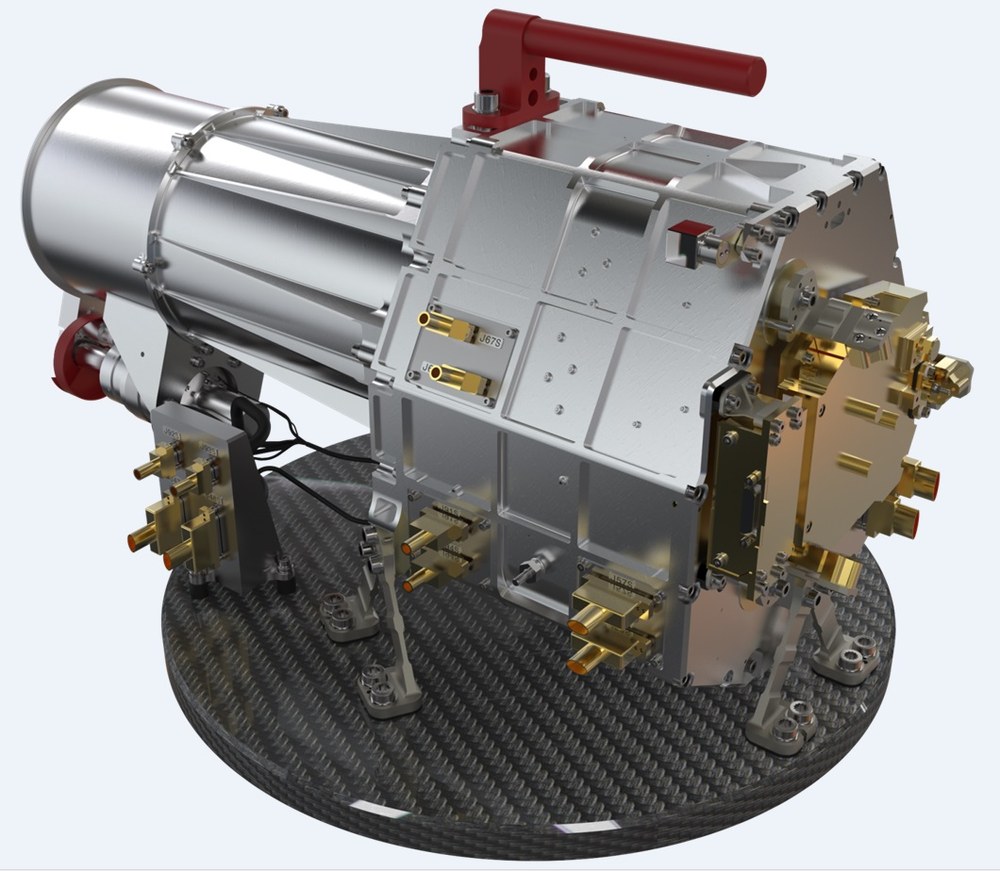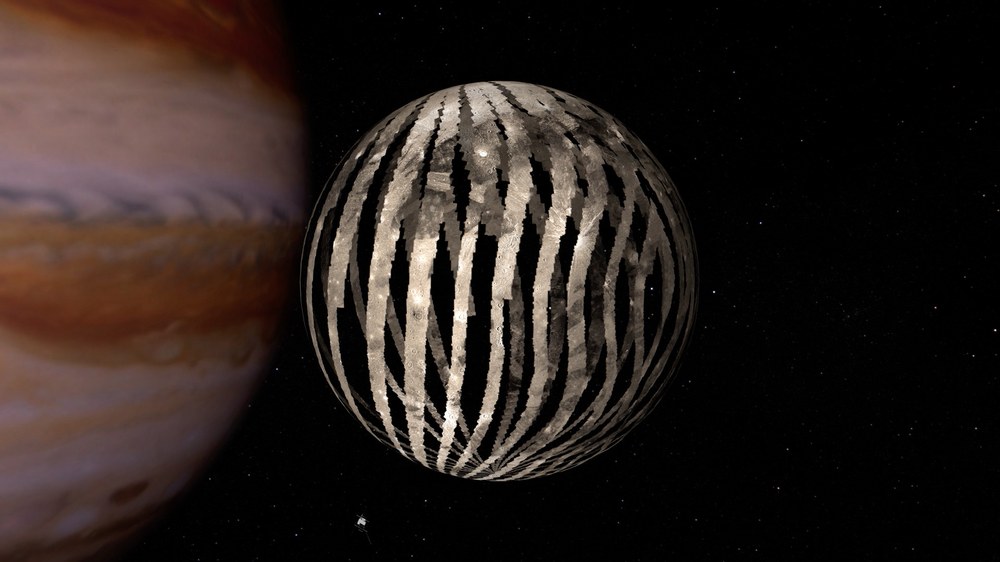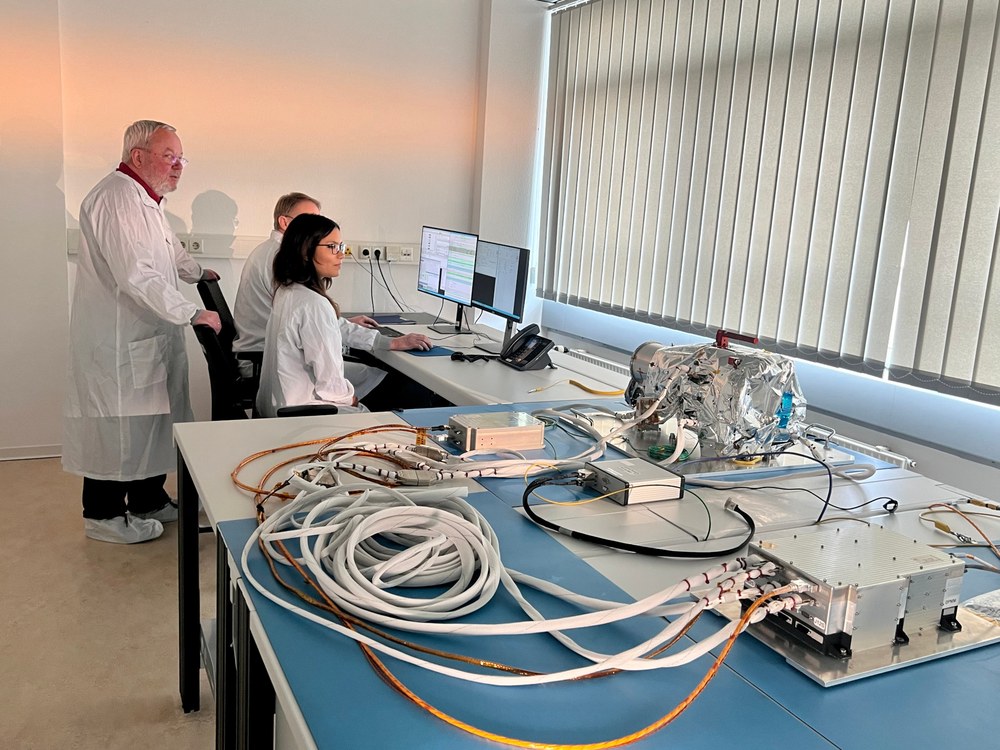JANUS camera system

LDO


The JANUS camera system is the 'eye' of the JUICE mission. It will primarily provide high-resolution multispectral images of Jupiter's large moons. The camera was selected by ESA in February 2013 as one of 11 scientific experiments for the mission. JANUS is an abbreviation of the Latin phrase 'Jovis, Amorum ac Natorum Undique Scrutator', which translates roughly as 'Comprehensive exploration of Jupiter, and his loves and descendants'. Jupiter's four largest moons are named after protagonists in the 'love affairs' of Zeus, the father of the gods, and the equivalent of Jupiter in Hellenic mythology. They are Io, Europa, Ganymede and Callisto.
The experiment was developed and built under Italian leadership with international collaboration, including contributions from the UK (Centre for Electronic Imaging, Open University, Milton Keynes), Spain (Instituto de Astrofísica de Andalucía, Granada) and the German Aerospace Center (Deutsches Zentrum für Luft- und Raumfahrt; DLR). The JANUS team is led by Principal Investigator (PI) Pasquale Palumbo from Parthenope University in Naples and Istituto nazionale di astrofisica in Rome. Co-PI (and successor to Ralf Jaumann of the Freie Universität Berlin) is Thomas Roatsch from the DLR Institute of Planetary Research. The prime industrial contractor for JANUS was the Italian Leonardo Group. The telescope was built and assembled with components developed by DLR at the Leonardo facility in Campi Bisenzio near Florence.
At their site in Berlin-Adlershof, the DLR Institute of Planetary Research constructed the Focal Plane Module (FPM), which carries the light-sensitive detector for JANUS, as well as the Proximity Electronics Unit (PEU) and the Main Electronics Unit (MEU), including the onboard software. DLR is also responsible for the scientific planning of the icy moon observations and for implementing the ground segment for the instrument.
Scientific goals of JANUS
The camera system's main task is to record the above-mentioned moons in medium to high resolution, and in the case of Ganymede even in a very high resolution of only a few metres per pixel. The multispectral image data will be used to decipher in space and time the geological processes that have led to the surface structures visible today. From this data, it will also be possible to draw conclusions as to whether oceans, layers of water under the minus 140-degree Celsius crusts of the icy moons, exist and – if so – what state they are in. In addition, the versatile camera will also explore Jupiter's uppermost cloud layers, the planet's very thin rings and some of its small, irregularly shaped moons. The image data could even help interpret the physical properties of Jupiter's magnetic field and the moons' tenuous atmospheres (exospheres).
The main focus is on mapping the three large icy moons Europa, Ganymede and Callisto as comprehensively as possible. The 35 close flybys to be conducted in the years 2031 to 2034 will serve this purpose. During the flybys, only one hemisphere will be illuminated by sunlight or, depending on the timing, slightly more of a moon's surface will be imaged. In order to nevertheless achieve global coverage in differing image resolutions, the mission is planned to include several fly-bys of the three moons. Most of them, 21, will be around Callisto, and 12 around Ganymede. From an engineering perspective, Europa is the most difficult of the three icy moons in this phase of the mission, since it is closer to Jupiter and its radiation environment is very strong, so only two close flybys are planned in order to protect the spacecraft and its instruments. For this same reason, JUICE will not approach Io, the closest moon to Jupiter, at all.
ESA's JUICE and NASA's Europa Clipper in tandem
However, the smaller data volume for Europa will be compensated for by NASA's Europa Clipper mission, which is being implemented at almost the same time. Europa Clipper will perform wide orbits around Jupiter between 2031 and 2034, completing several dozen fast flybys of the smallest of the three icy moons. JUICE will be steered into orbit around Ganymede after the phase of moon flybys, so that Jupiter's largest moon can then be mapped globally from various orbits. In doing so, the JANUS science team will benefit from being able to identify the most interesting formations first in a high-altitude orbit (5000 kilometres) and then in a low orbit (500 kilometres) during the Ganymede mission phase of JUICE from 2034. JANUS will then be programmed for targeted imaging at the highest possible resolution of less than three metres per pixel.
The legacy of the Galileo mission
Images of the icy moons acquired by NASA's Galileo spacecraft between 1996 and 2003 have shown how diverse the geological and tectonic processes driven from within are. These have created a wide variety of landscapes on all three planetary bodies. In the case of Europa, it is also quite conceivable that the surface is still being shaped today by water, which is forced to the surface as cracks break open and then solidifies into ice there. Almost no impact craters are visible on Europa. This is indicative of a very young surface, geologically speaking. Galileo's camera system was also able to identify coloured deposits there as salts. These surfaces will also be examined multispectrally with JANUS using 12 filters at important wavelengths.
Galileo was unable to provide more image data from these highly interesting areas despite several extensions of the mission duration – the spacecraft's high-gain antenna was not functional and only small amounts of data could be transmitted using a secondary antenna.
This is why the JANUS camera system is of paramount importance. Its images will show the icy moons in much greater detail. In some places, structures less than three metres in size will be able to be resolved. The complementary image data sets from JUICE and Europa Clipper will set the standard for decades to come. They will help answer fundamental questions about chronology and geological history, about ice volcanism (cryovolcanism), about tectonics in brittle ice that is at a temperature of at least minus 140 degrees Celsius, and also about subcrustal oceans and their 'habitability' for simple life forms.
JANUS – an ideal camera for Jupiter's moons
JANUS is designed to acquire images in the wavelengths of visible light (starting at 350 micrometres) and extending to the near infrared (1050 micrometres). The field of view is 1.3 degrees and JANUS can resolve a tennis ball from a distance of one kilometre. A spatial resolution of up to 2.4 metres per pixel will be achieved in the closest orbit around Ganymede, and about 10 kilometres per pixel for Jupiter.
A distinctive element of JANUS is its wheel with 13 filters in different colours that can be rotated in front of the FPM. With each filter, JANUS can detect different concentrations of chemical elements. For example, red for methane and yellow for sodium, or near-infrared for rock-forming minerals and salts on the moons. JANUS is extremely dimensionally stable. In order to keep the JANUS optics rigid and absolutely precise in their geometric alignment and thus guarantee high-quality images – despite vibrations during launch and sudden temperature changes – a special mechanical and thermal design was developed. Deformations are limited to a thickness of less than a tenth of a human hair.
The JANUS camera consists of three spatially separated units – the optical head including the telescope, the filter wheel and the FPM. In addition, there are proximity and main electronics including camera control, data management, image data compression and a power supply unit. The catadioptric telescope – an optical system that has both refractive lenses and reflective mirrors – has excellent optical qualities and is coupled with a framing detector. This employs a sensor with 2000 by 1504 pixels, located in the FPM.
ESA mission with strong German participation
JUICEi s ESA's largest and most comprehensive mission to explore the planets of the Solar System. In addition to ESA , NASA and the Japanese space agency JAXA have also contributed to the mission. ESA is providing funding for the satellite platform, the launch with an Ariane 5 ECA rocket and the operation of the spacecraft. The funding for the scientific payloads for JUICE is largely provided by national space agencies and the participating institutes themselves. In addition to the JANUS, SWI and GALA experiments, the German Space Agency at DLR is funding further German scientific contributions from the National Space Programme with the Particle Environment Package (PEP) particle spectrometer, the Jupiter Magnetometer (J-MAG), the Radar for Icy Moons Exploration (RIME) radar instrument and an instrument for radiosounding Jupiter's atmosphere (3GM).
